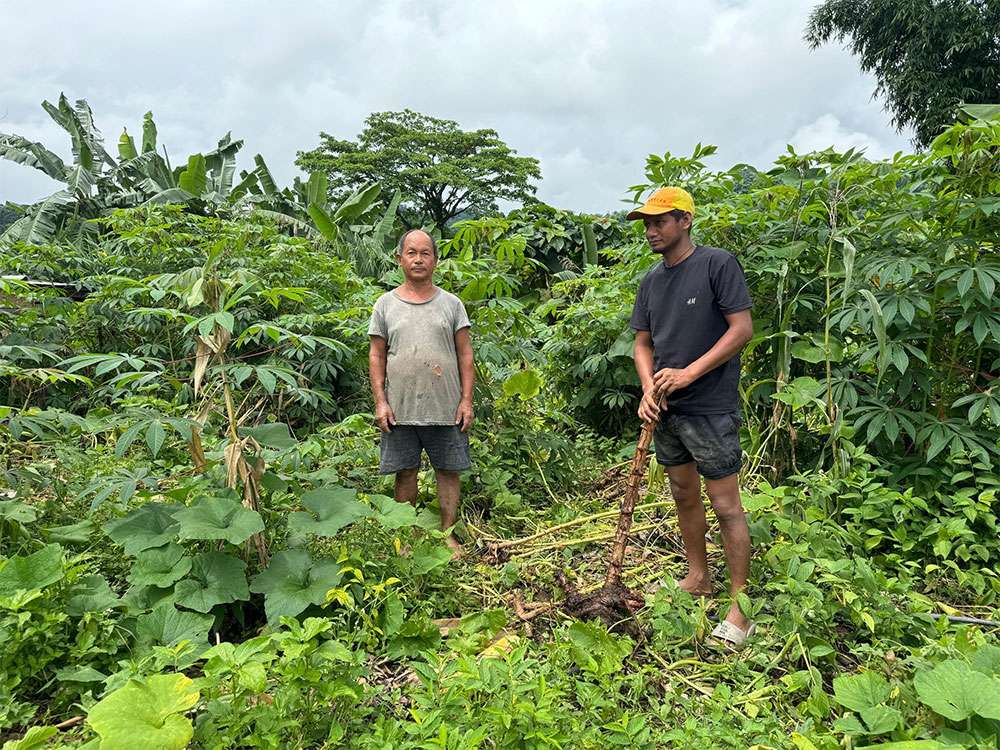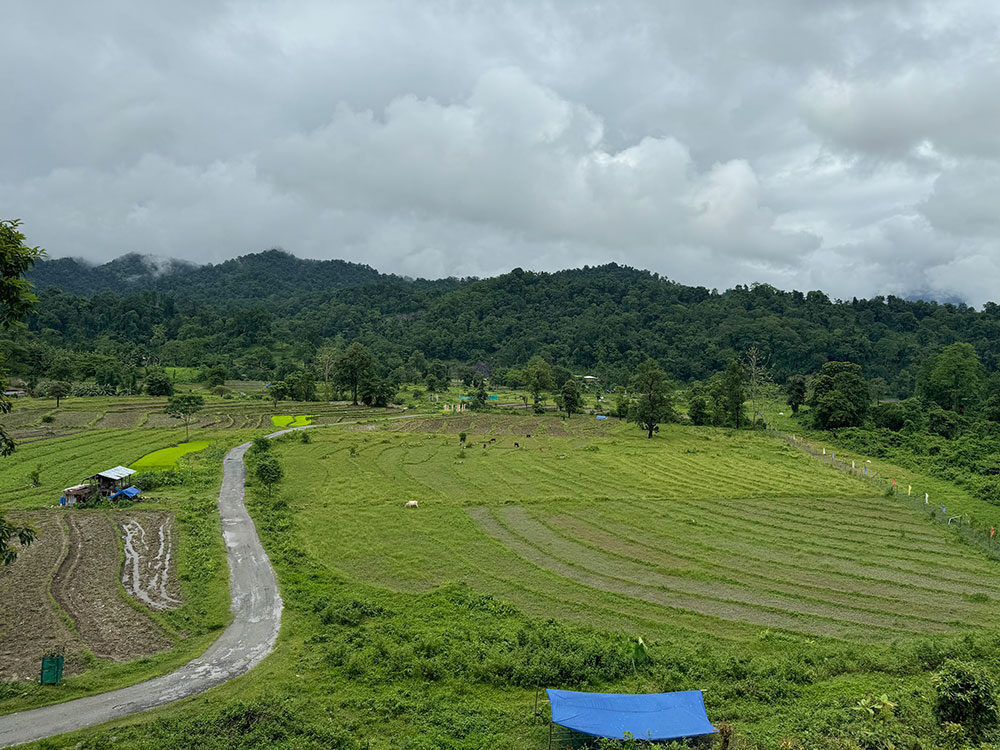Lhakpa Quendren
Sarpang—Kishor Bhattarai, a 40-year-old farmer in Lhaptshakha, Singye gewog, joins his neighbours almost every day in repairing the chain-link fencing that is frequently damaged by elephants.
It is cultivation time in the gewog and farmers are busy and worried. If the elephants are destroying the fencing, wild pigs can easily enter through the irrigation canals that pass through the fields.
Despite installing chain-link fencings a year ago, farmers said a sustainable solution to human-wildlife conflict remains a dream. The seven-kilometer chain-link fence, which encloses 700 acres of wetland, benefits 60 households in two chiwogs. However, wildlife issues have forced some farmers to leave their fields fallow.


Elephants damaged chain-link fencing
The wetland, according to farmers, is the most productive rice field in the gewog, which could produce over 12 metric tonnes of rice. It has now dropped to about seven metric tonnes due to damage by wild animals.
“We had plans to fully cultivate the entire wetland, including the fallow lands,” said Kishor Bhattarai. “Some have already abandoned their fields, while others are considering giving up next year if the same issues continue.”
Elephants and wild pigs have damaged banana trees, maize, cassava and areca nuts. Elephants also damaged a house in their village, causing fear among the farmers about potential threats to their lives.
Another farmer, Ngagyel Tenzin, 54, said wild pigs, which initially attacked bananas, have now started eating areca nuts. “As we find more solutions, wild animals seem to become more aggressive.”
“Our efforts are going to waste,” said 66-year-old Lal Bahadur Gurung, who recently lost his bananas and cassava fields to a herd of wandering elephants.
What can be done?
While farmers remain grateful to the government for finding alternative solutions, existing approaches have not adequately managed the challenges posed by wildlife.
“We still have to guard the crops at night. If it is elephants and wild pigs at night, it is peacocks in the morning. Barbed wire fencing could prevent wild elephants from entering the fields,” said 37-year-old Hari Bhattarai.
Farmers suggest that enclosing the entire area with electric wire would be beneficial. They have used the remaining materials of the solar fence, combining them with electric wire outside the chain-link fence.
However, this effort remains unfinished due to a shortage of wire. The gewog administration attributed budget constraints for not purchasing an energizer battery for the electric fence, leaving it without power, according to the locals.
Singye Gup, Jigme, said that while the gewog administration has not received any proposals from the beneficiaries, it is a shared responsibility. “When everything is provided by the government, there is a lack of ownership.”
“The gewog provided wires and machines, but beneficiaries are responsible for repair costs in case of damage caused by thunderstorms or other incidents,” he said. However, the lack of clear rules and regulations hinders the implementation.
Gup Jigme said that the main reason for the ineffectiveness could be beneficiaries adopting their own chain-link fencing design instead of following the ministry’s design, which includes barbed wire on the top.
Lhaptshakha and Ngenyul Chiwogs in Singye Gewog, Sarpang, received a government-supported chain-link fence project in March 2023. The Ministry of Agriculture and Livestock supported the fencing materials, costing Nu 11.1 million.


